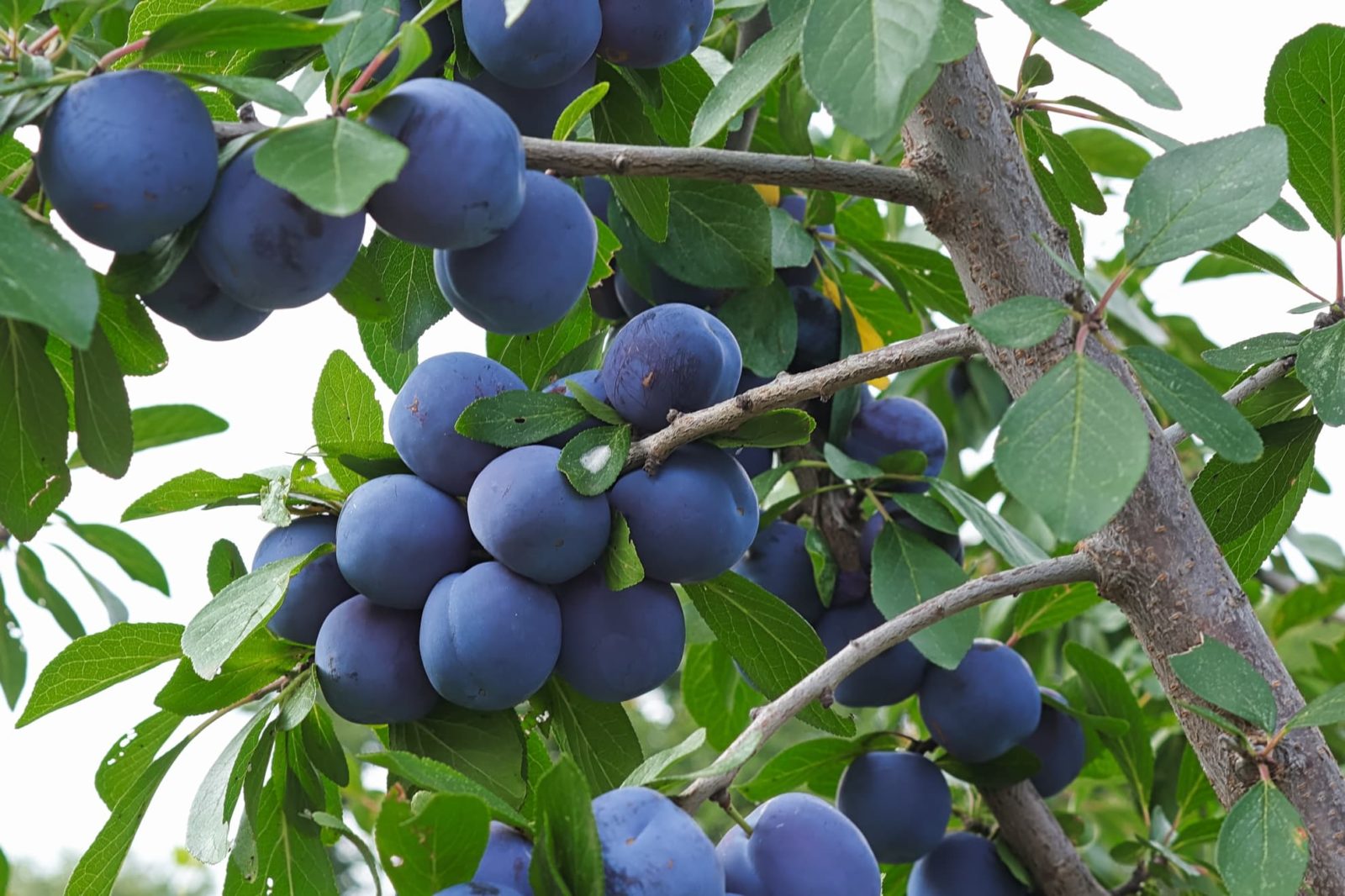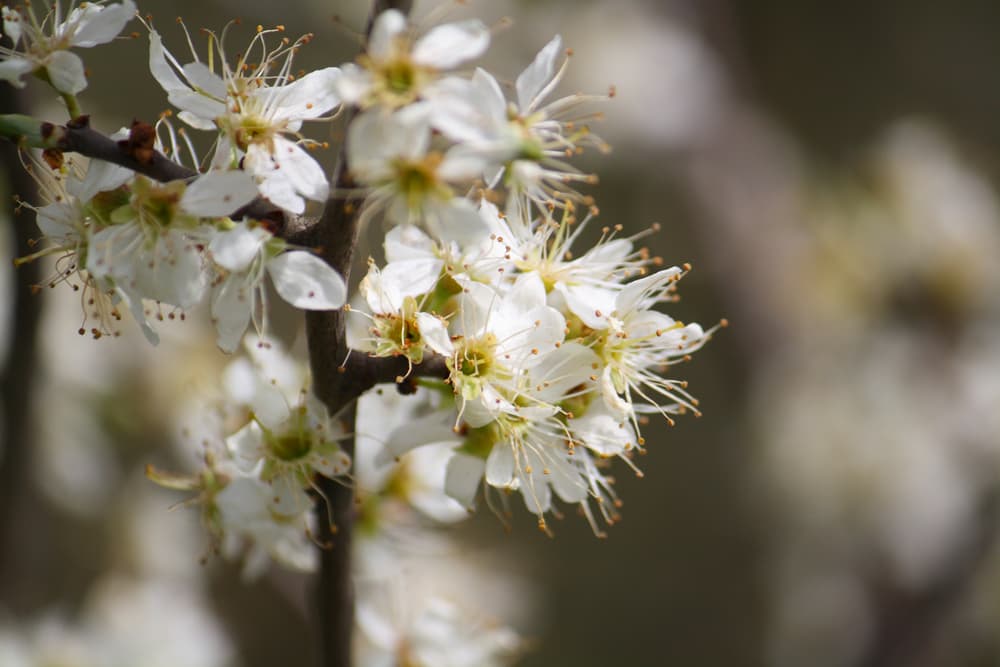Growing Plum Trees: How To Plant Out A Bare Root Tree And Care For It Properly

FRUITS > PLUMS

Elizabeth is a Permaculture Garden Designer, Sustainability Consultant and Professional Writer, working as an advocate for positive change. She graduated from the University of St. Andrews with an MA in English and Philosophy and obtained a Diploma in Applied Permaculture Design from the Permaculture Association.
Reviewed By COLIN SKELLY

Colin is a Horticulturist and Horticultural Consultant with experience in a range of practical and managerial roles across heritage, commercial and public horticulture. He holds the Royal Horticultural Society’s Master of Horticulture award and has a particular interest in horticultural ecology and naturalistic planting for habitat and climate resilience.
IN THIS GUIDE
PLUM GUIDES
Plum trees are an excellent choice for many UK gardens, providing both visual appeal and an abundant yield.
‘Plum’ is the name given to the fruits of a number of different trees in the genus Prunus.
European plums (Prunus domestica) are the type most commonly grown for their edible fruits in UK gardens and will be the focus of this guide.
Overview
| Botanical Name | Prunus domestica |
| Common Name(s) | Plum Tree |
| Plant Type | Tree / Fruit |
| Native Area | Europe (Cultivated) |
| Hardiness Rating | H5 |
| Foliage | Deciduous |
| Flowers | Blossom followed by fruits |
| When To Sow / Plant | November, December, January, February |
| Flowering Months | March, April |
Sunlight
Preferred
Full Sun
Exposure
Sheltered
Size
Height
2.5 – 4M
Spread
2.5 – 4M
Soil
Preferred
Loam, Sand
Moisture
Moist but well drained
pH
Neutral; Slightly Acidic
However, P. cerasifera is one type of ‘ornamental plum tree’ grown in UK gardens which will sometimes also bear edible fruit.

And there are also other plums, such as Chinese plums, Japanese plums and a wide range of New World plums too.
Within even European plums, there is an almost bewildering range of different types of plum to consider.
P. domestica is divided into different subspecies.

When we talk about plums, we might be talking about:
- Common plums
- Damsons and bullaces
- Egg plums
- Gages/greengages
- Mirabelle plums etc.
It can be helpful to understand a little more about the different plums you might grow before you narrow down your choices and decide which one may be right for your garden.
Common Types

As well as honing in on the subspecies types, you will also need to think about the specific cultivar of plum tree that you would like to grow.
Some common and well-loved options are:
- ‘Avalon’
- ‘Blue Tit’
- ‘Cambridge Gage’
- ‘Czar’
- ‘Denniston’s Superb’
- ‘Farleigh Damson’
- ‘Golden Sphere’
- ‘Jubilee’
- ‘Marjorie’s Seedling’
- ‘Opal’
- ‘Shropshire’
- ‘Victoria’
However, there are many more interesting options to consider, and many things to bear in mind when choosing your plum tree.

You will need to consider:
- Whether you are looking for cooking or dessert plums (and have any flavour preferences).
- Whether the tree is self-fertile or needs a pollination partner for best results.
- When the fruit will be ready to harvest (remember that plum trees are often categorised into early, mid-season and late varieties depending on when the fruits will be ready to harvest).

Growing From Pits
While you can grow a tree from a plum pit, that tree will not necessarily have fruits which taste like the fruit from which the pit came – it may not even fruit at all.
What is more, there are no guarantees that the tree which grows from the pit will be suitable for growing in your garden.

One important thing to note is that when you purchase a fruit tree for your garden, it will usually have been grafted.
Grafted trees are made up of a rootstock (the bottom-most part of the tree with roots), and a scion (top part of the tree) of the fruit varietal you have chosen.
The rootstock determines the health, size and vigour of the tree, and the scion is what determines the fruit that you will get.

When choosing a plum tree for your garden, therefore, you need to think not only about choosing a named varietal, but also about choosing one on an appropriate rootstock.
In the UK, many plums are grafted on to:
- ‘Saint Julian‘ – A semi-vigorous rootstock which creates bush-trained trees 4.5-5m tall.
- ‘Torinel’ – also semi-vigorous, good for containers, 2.4-3m tall
- ‘Pixy‘ – a semi-dwarfing rootstock used for dwarf bushes, cordons and patio trees, with an ultimate height of 3-4m tall.
“Even a small garden can accommodate a plum on a Torinel or Pixy rootstock,” shares Colin Skelly, a Master Horticulturist.
“These are also suitable for growing in a (large) container if you have the time to keep up with its demands, particularly in summer.
“The birds in my garden have proved adept at judging the ripeness of the fruit on my recently planted plum (on Pixy rootstock). Hopefully, when is has grown a bit more, there’ll be enough to share!”
Planting Bare Root Plums

Plum trees are typically planted out as bare-root trees over the dormant period, some time between November and February.
Bare root trees are cheaper, and will usually establish more successfully than pot-grown trees purchased at other times of the year.
Choosing A Planting Site

Standard or bush-trained plum trees can make excellent stand-alone trees for smaller gardens.
Plums can also be trained in a variety of different ways in order to make the most of small spaces.
Be sure to choose the right option for the space available, considering its shape (and how you will prune it) as well as its eventual size.

Smaller plum trees can also be grown in large containers, though container-grown trees will always require more care.
If you have the space, including a plum tree as part of a forest garden design can be a great idea.
Forest Gardens & Companion Planting
A forest garden is an eco-friendly and low-maintenance type of garden, which maximises yield while mimicking and working with nature and creating a thriving, biodiverse and resilient ecosystem.
Forest gardens do not need to be huge – they may only include 2-3 trees.

But creating one does mean thinking not only about productive trees, but also about creating synergistic combinations of layered planting beneath them.
Every time you think about planting a plum tree (or any other fruit tree) you should also consider the plants that will aid their growth, help with pollination and pest control, and generally improve the health and resilience of the tree and the system as a whole.

Planting fruit tree guilds beneath and around a fruit tree is a type of companion planting.
Considering the creation of guilds around a plum tree should definitely be considered when making plans about where to plant your new tree.
Preferred Climate

Plum trees are typically H5 hardy, meaning that they can survive through the winter across most of the UK, even during severe winters.
However, they will fruit best when grown in a sheltered and protected site in full sun – and some varieties will do best when given the warmth and protection of a spot against a stone or brick wall.
Some are tougher and hardier than others.
Soil Conditions

In terms of soil, plum trees will thrive in a loamy or sandy soil, with moderate to high fertility, enriched with plenty of organic matter.
They do best where the soil is moist but free draining, though can also cope with more free-draining conditions.
And they prefer soils (or growing media) with a neutral or slightly acidic pH.
How To Plant

As when planting any fruit tree, to plant a plum tree you should dig a generous hole, then add compost of well-rotted manure to the base of it.
Place the tree in the hole, making sure that the soil is at the same level as previously, and that the graft point is above the ground.
Firm the soil back around the roots, making sure that there are no air pockets.
Plum Tree Care Guidelines

Plum trees placed in a suitable location will require some care until they become established.
Be sure to water well during the first growing season when the weather is dry.
Once established, plum trees should be fairly low maintenance and easy to care for.
Mulching
Restricting grass growth around the base of a new fruit tree, and mulching as well as adding a guild of beneficial companion plants is an excellent idea.
Organic mulch will add slow release fertility, improve the surrounding soil, reduce moisture loss and aid in weed suppression.
Fertilising

The best way to make sure that a plum tree has the nutrients it needs over time is through the use of mulches, and companion planting.
Dynamic accumulator plants (comfrey etc..) chopped and dropped around the base of the tree should help in keeping your plum tree happy and healthy.
Transplanting Seedlings
If you have grown a plum tree from a pit, in spite of the above cautionary note, and would like to give it a go, your young seedlings should usually be kept in a tree nursery or protected location in a container for their first year at least.
They should then ideally be moved to their final growing position in early spring.
Container Growing

Small plum trees can certainly be grown in large containers in small spaces, and you should fill your container with a mix of soil and compost or a suitable soil-based potting mix.
Note, however, that when growing in a container, you will have to spend more time on their care.
They will continue to need regular watering – more than those grown in the ground – and may benefit from a liquid feed if growth is poor.
Propagation

Effective propagation of plum trees usually involves more complex horticultural methods like chip budding and grafting, so are not usually undertaken by gardening novices.
Common Problems & Diseases
Plums placed in the right spot, with a guild of beneficial companion plants, will usually experience far fewer problems.
So your first defence against any plum tree issues should be careful and holistic garden design.

Pests plum trees can suffer from include aphids, scales, moths, caterpillars and birds.
Diseases to remain vigilant for include blossom wilt and brown rot, pocket plum, bacterial canker and silver leaf, for example.
Leaves Turning Brown

If plum tree leaves turn brown, or there is leaf drop, this can be a sign of drought, or improper watering.
It can also be due to a fungal disease or other systemic issues which prevent the tree from taking up water effectively through its roots – or which stops water from reaching a branch and its leaves as it should.
Remember, however, that plum trees are deciduous and leaf drop is normal and natural if it occurs when it should in the autumn months.
